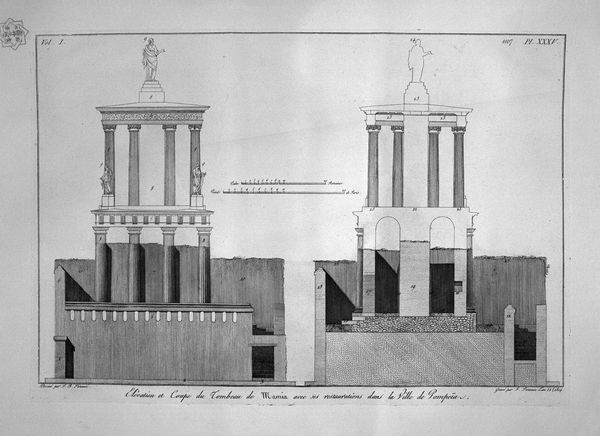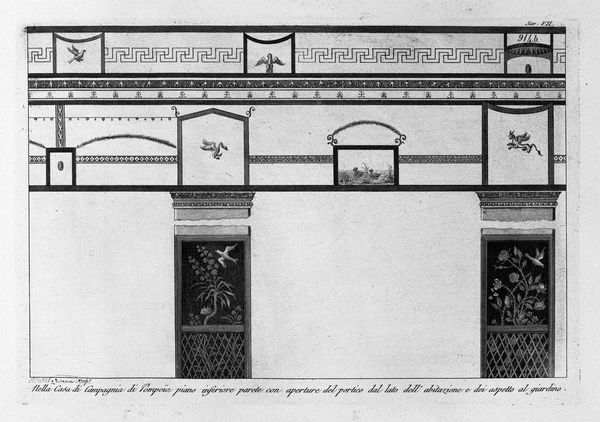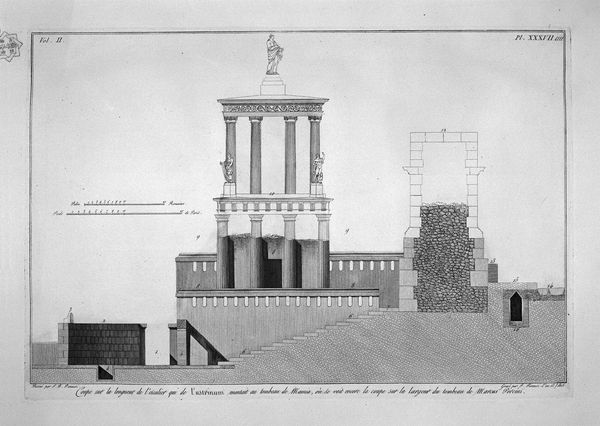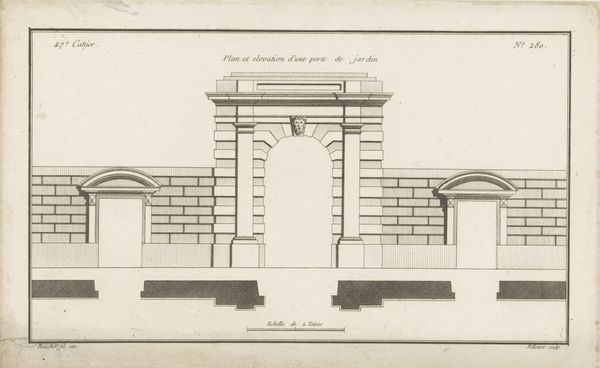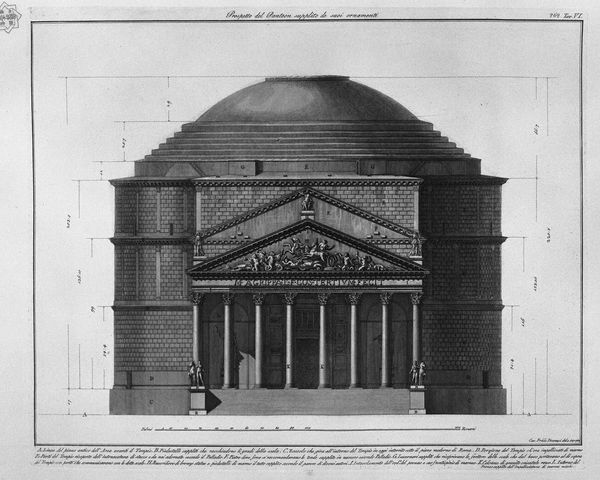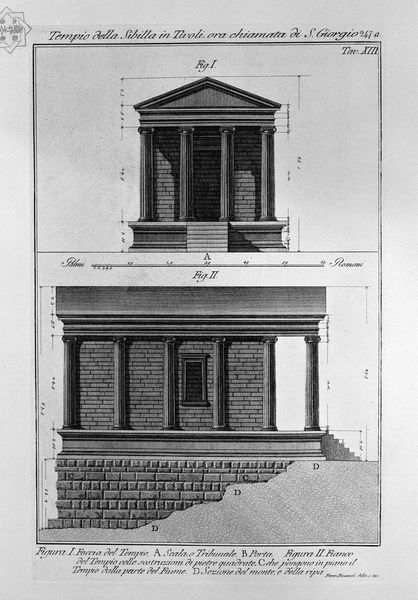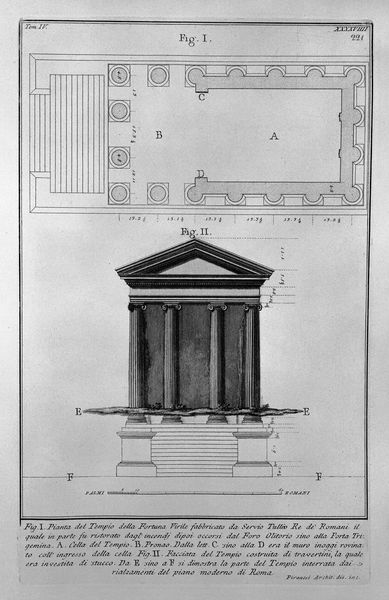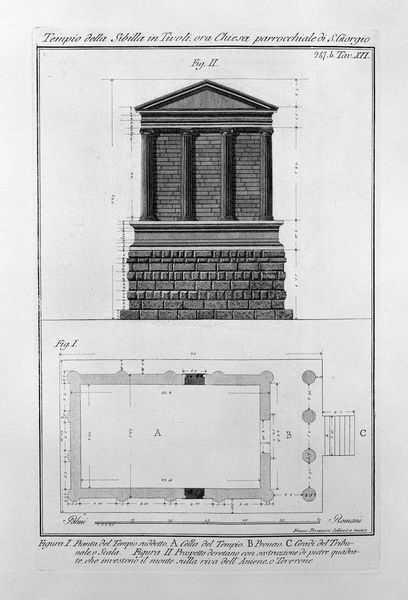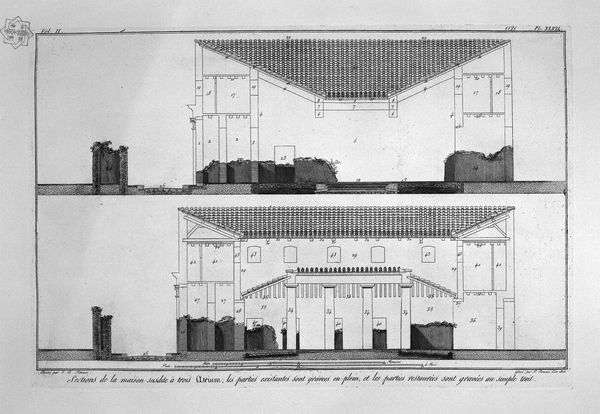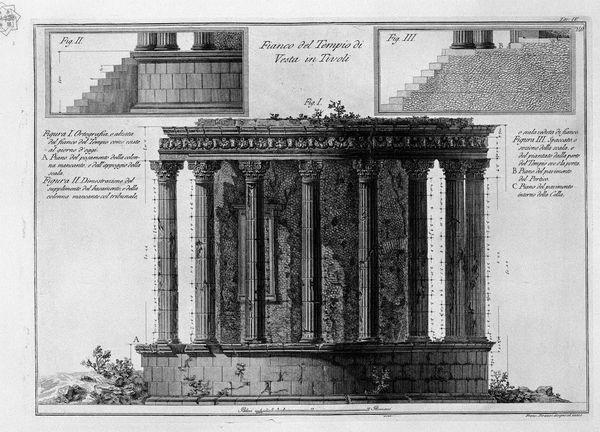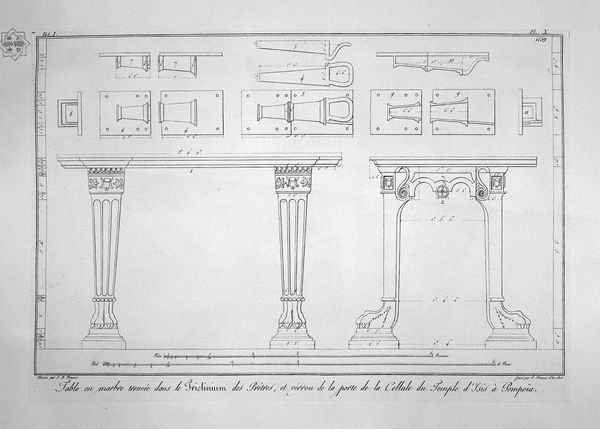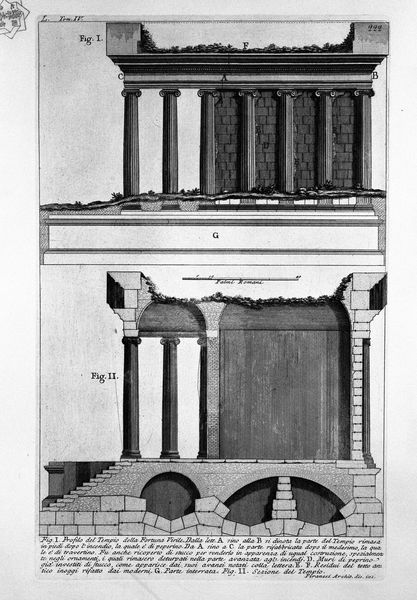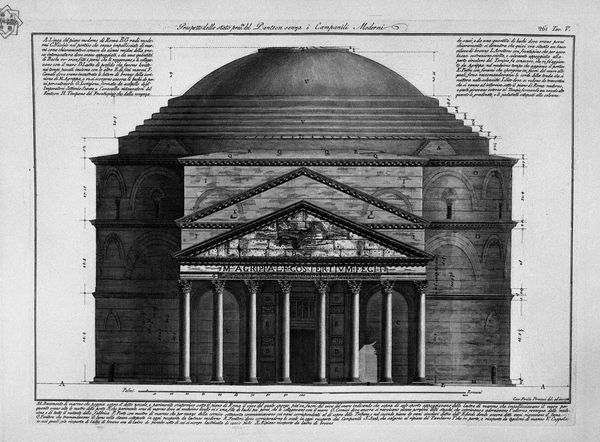
Longitudinal section of the staircase leading to the tomb aforesaid
0:00
0:00
drawing, etching, engraving, architecture
#
drawing
#
neoclacissism
#
etching
#
greek-and-roman-art
#
old engraving style
#
etching
#
architectural section drawing
#
architectural drawing
#
architecture drawing
#
history-painting
#
engraving
#
architecture
Copyright: Public domain
Curator: The stark geometry of this etching initially gives me a feeling of solemn contemplation. Editor: Indeed. What we’re observing is Giovanni Battista Piranesi's “Longitudinal section of the staircase leading to the tomb aforesaid.” Piranesi, known for his dramatic depictions of Roman antiquities, employs etching and engraving techniques to bring architecture to life—or in this case, perhaps afterlife. He stands as a key figure in Neoclassicism and, in this work, offers insight into historical approaches of burial structures. Curator: There’s a meticulous, almost forensic quality to it. He isn’t merely illustrating a tomb; he's dissecting it. I’m drawn to the levels and implied spaces, as if it invites us to analyze not only architectural history but consider the socio-political forces, particularly the power and funerary rites of classical civilizations that birthed them. Editor: I get that dissecting feeling. Like an anatomical drawing for buildings. Look at the texture he achieves; it's incredible. This isn't just lines on paper, you can feel the stone, the weight of the architecture—almost taste the dust of centuries. Curator: Right, and Piranesi often exaggerates scale. He imbues these ancient ruins with a sense of grandeur. We might interpret this embellishment as indicative of eighteenth-century attitudes toward the antique—a desire to connect with, and perhaps even surpass, the achievements of the past. But for whom and what? The social class able to imagine such displays? It prompts questions of cultural heritage. Editor: Mmm, makes me think: If I were to build a tomb, it’d be less about grandeur, and more about embedding myself into nature. Think: a moss-covered sanctuary. Something to feed back into the Earth, you know? Less a monument and more of a cycle. But Piranesi's view... very different story. He emphasizes the vertical, suggesting some divine access. I suppose it reflects the different hopes about what might follow this mortal coil. Curator: Ultimately, it highlights the role art plays in documenting, interpreting, and negotiating history. By presenting these ruins as subjects worthy of intense study, Piranesi invited his contemporaries, and continues to encourage us, to reflect critically on legacies, power, and meaning attached to what’s gone. Editor: Right, right. Thinking about artmaking as more than just decoration or documentation but also preservation—and sometimes even questioning the motives behind these elaborate farewells, or "see you laters!" carved in stone. Heavy.
Comments
No comments
Be the first to comment and join the conversation on the ultimate creative platform.
